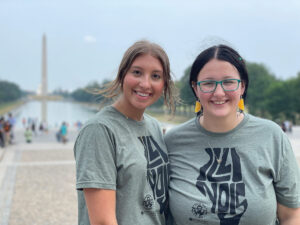Skin cancer is the most common type of cancer in the U.S. One in five Americans will develop it in their lifetime, and nearly 20 Americans die from melanoma every day, according to the American Academy of Dermatology (AAD) Association.
Although those with fair skin are at greater risk of getting skin cancer, anyone can get it.
Basal and squamous cell carcinomas are the two most common types. Melanoma, the deadliest form of skin cancer, is the third most common type. The risk for melanoma doubles for people who have had more than five sunburns, according to the Skin Cancer Foundation (SCF). However, even without a burn, any sun exposure increases the risk of skin cancer.
The most preventable cause of skin cancer, according to the Centers for Disease Control and Prevention (CDC), is overexposure to ultraviolet (UV) light from the sun or artificial sources, such as tanning beds.
Safety in the sun
To prevent skin cancer, protect yourself from UV rays, not just during the summer but year-round. UV rays can reach you on non-sunny days (cloudy and cool days), and they can also reflect off other surfaces like water, cement, sand and snow.
In the continental U.S., UV rays are strongest from 10 a.m. to 4 p.m., according to the CDC. The UV Index forecasts the strength of UV rays each day. Protect your skin from too much exposure to the sun by following a few simple tips.
- Stay in the shade.
- Wear sun-protective clothing.
- Wear a hat with a wide brim.
- Wear sunglasses that wrap around and block both UVA and UVB rays.
- Apply broad-spectrum, water-resistant sunscreen with an SPF of 30 or higher to cover skin not protected by clothing. Do not forget to apply it to the tops of your feet, neck, ears and the top of your head.
- Reapply sunscreen every 2 hours or after sweating or swimming.
Indoor tanning
Using a tanning bed, booth, sunbed or sunlamp exposes users to high levels of UV rays. Over time, too much exposure to UV rays can cause skin cancers, cataracts and cancers of the eye, according to the CDC.
Indoor tanning does not protect against sunburns. A “base tan” is a sign of skin damage. Using a tanning bed or other indoor tanning methods can also cause serious injury; burns send more than 3,000 people to the emergency room each year.
The skin you’re in
The bottom line is that you should protect your skin from sun/UV exposure at all times. Consider using a self-tanning product if you want to look tan (but be sure to still use sunscreen). Perform regular skin self-exams to detect skin cancer early when it is most treatable. See a dermatologist if you notice something new or suspicious on your skin.










